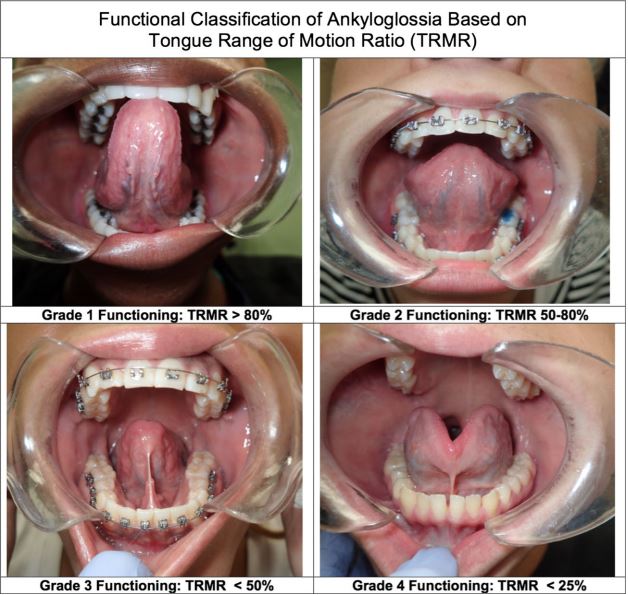Tongue-Tie Tips #1
Hello everyone! I am going to be posting pearls every week to help you identify patients with tongue restrictions, and in the coming weeks will be explaining how we examine, diagnose, and treat these conditions in our office.
In our first of this series, we’ll talk about the best way to examine patients for a tongue restriction. Sticking out the tongue to assess for a tongue-tie is how most are taught in dental or medical school, but it will miss 90% of tongue-ties! The best way is to ask the patient to LIFT the tongue. The tongue’s elevation is much more important than protrusion for the daily functions of eating, speaking, breathing, and sleeping.
Assignment: Check under your patients’ tongues next week. Ask your patient to LIFT their tongue with their mouth open a comfortable amount, and see how high it lifts to the incisive papilla. If they can lift less than 25%, that’s a very limiting restriction, Grade 4. If they can lift 25%-50% it’s a Grade 3, which is still significantly restricted. If they can lift 50-80% it’s a Grade 2, in the normal range, but some still may have symptoms, and 80% or more (they can touch the papilla with the mouth open normally) it’s unlikely they have tongue-tie issues.
Next week we will discuss the symptoms that go with the restriction. But for now, just ask them to lift their tongue, and report back here what you see or post a picture. You can also check family members. You’ll be surprised at what you find out!
(Sneak Peek: Ask the patients (adults or kids) whose tongues are more restricted if they have any speech, feeding, or sleep issues. And additionally, neck or shoulder tension, headaches, or migraines.)
Photos are from Yoon 2017, Toward a Functional Definition of Ankyloglossia.
Read the full text here: https://aomtinfo.org/wp-content/uploads/2016/08/2017-Toward-a-functional-defintion-of-ankyloglossia-frenulum-length-mobility-in-1052-subjects-Sleep-Breathing-Yoon.pdf
